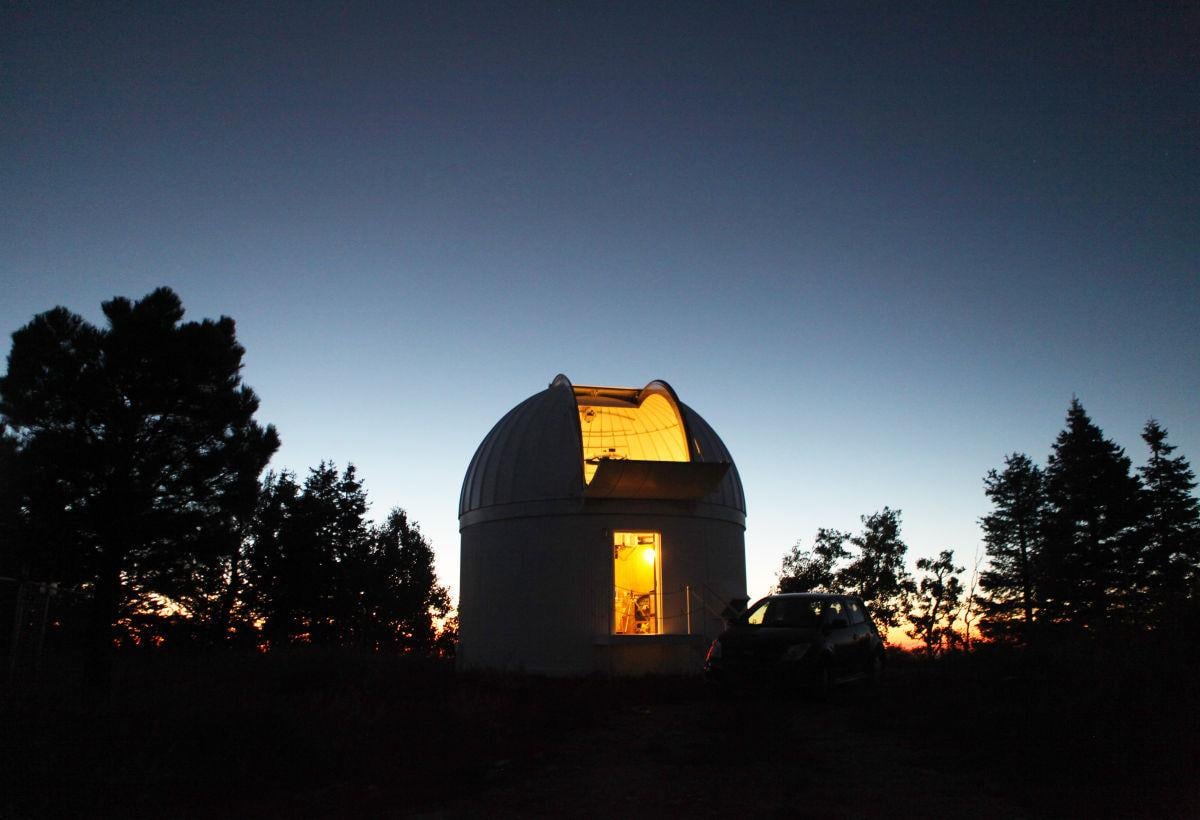A combination of sky surveillance, high-tech telescopes, serendipity and Twitter allowed astronomers to closely observe and characterize a tiny near-Earth asteroid and possibly determine its parentage.
“This is the smallest asteroid ever to be looked at in this detail,” said University of Arizona astronomer Vishnu Reddy, whose own scheduled telescope time on the NASA Infrared Telescope Facility in Hawaii coincided with detection of a 6-foot-diameter space rock called 2015 TC25 by the Catalina Sky Survey on Oct. 12, 2015.
“A lot of this is luck,” said Reddy, an assistant professor with the UA Lunar and Planetary Laboratory. “Telescopes that do characterization are scheduled months in advance.”
But on Oct. 12, Reddy was presented with an object on a path to fly within 69,000 miles of Earth.
Reddy said he knew he could obtain spectra of the object and possibly determine its composition, but more eyes on the object would be helpful. He decided to tweet for backup.
“I contacted other colleagues on Twitter. This is a paper that started on Twitter,” he said.
The results are published in the December issue of the Astronomical Journal.
Reddy was joined that first night by colleagues at two other optical telescopes — the Lowell Observatory’s 4.3-meter Discovery Channel Telescope near Flagstaff and the 3-meter telescope at Magdalena Ridge Observatory near Socorro, New Mexico.
A few days later, the hunt was joined by the giant radio telescope at Arecibo Observatory in Puerto Rico. The object was too close for radio-wave observation before then, said Reddy.
Reddy was observing from Mauna Kea on the island of Hawaii as part of a regularly scheduled NASA Near-Earth Objects Observations Program.
The paper says the asteroid is bright, reflecting about 60 percent of sunlight. It is also spinning quickly and appears to be a single, solid object that is not dragging along a cloud of dust.
It appears to be a rare asteroid type known as an aubrite, a type that accounts for only 0.14 percent of known meteorites.
The paper suggests that it is a piece of a larger object in the asteroid belt between Jupiter and Mars.
“The best candidate source body” is a 70-kilometer E-type asteroid called Nysa, the paper says.





